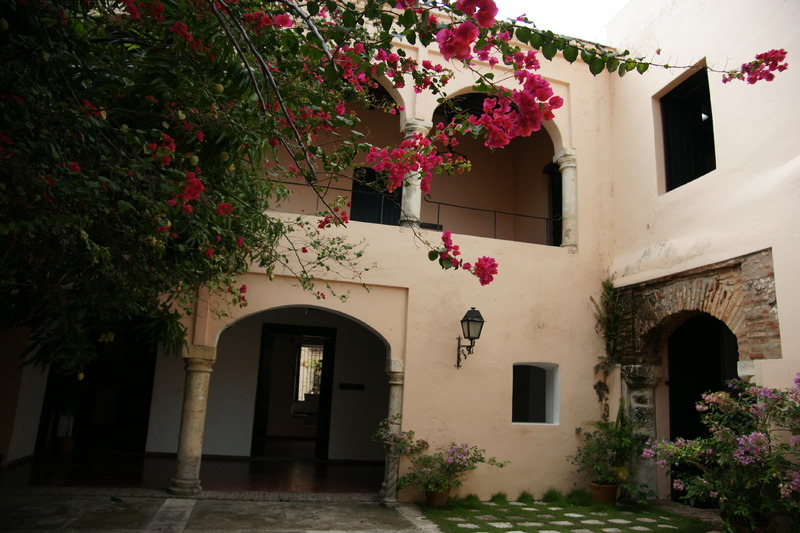Household slaves of Captain Gerónimo Agüero Bardecí in Santo Domingo (1605)
TRANSCRIPTION
ENGLISH TRANSLATION
[On the left margin: 8 slaves] r Item a wooden box r Item a chest from Castille r Item another ammunition harquebus with its bottles r Item a pair of breeches made of old camel skin r Item two bed mattresses with their linen and wool r Item a Black woman named catalina from Bran land r Item a young Black named Joan Bran r Item a mulatto woman named Augustina Criolla r Item another Black woman named Ursula Arada r Item another Black woman named Ysabel Bran r Item another Black woman named Casilda criolla r Item two Mulatto boys named Luisico and Anica r All of which the said goods were given as deposit by the said bailiff to don Aluaro Cavallero Pemintel and to Lope de Bardeçi de Mella, councilmembers, both of whom being present jointly and together, and each of them on his own liable in solidum, resigning the laws of joint responsibility as contained therein, so that from any of them [the parties] may be received or collected what is contained in this bail deed so that no initiative nor confiscation of assets may need to be taken nor is taken against them or any of their properties by jurisdiction or by law which and whose benefits they expressly resigned, and in accordance with what has been said they stated that they were constituting and constituted themselves as depositaries of all [Rubric]
Commentary
In 1605, La Española’s military captain Gerónimo Agüero was accused and tried by the judicial authorities for being an accomplice to or benefiting from smuggling activities in the Banda del Norte region after being commissioned precisely to stop this economic practice, socially widespread among the settlers of the region, but criminal in the eyes of the colony’s authorities.
Part of the judicial proceedings against Agüero comprised confiscating his property, including his household furniture and other items, along with eight Black slaves, all listed in the inventory produced to officialize the confiscation. The slaves are listed as four women described as Black, another woman described as mulata, and a Black boy and two children, one male and one female, described as mulaticos.
Three of the Black female slaves are identified with ethnic names, two as Bran and one as Arada. Two additional female slaves appeared as criollas or creoles, meaning born in the island; one listed as Black and the other of mixed race.
 Sixteenth-Century La Española: Glimpses of the First Blacks in the Early Colonial Americas
Sixteenth-Century La Española: Glimpses of the First Blacks in the Early Colonial Americas 
